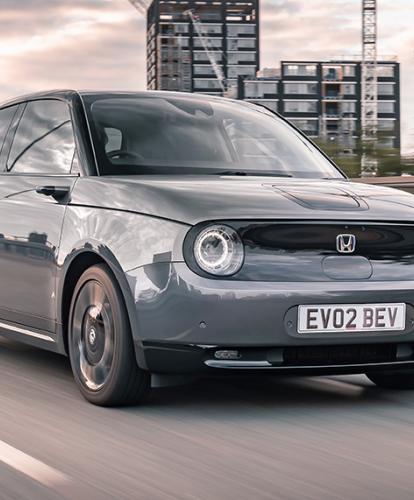Honda is to release 30 electric vehicle (EV) models by 2030 in new plans announced yesterday. According to the Japanese manufacturer, it wants to bring 30 electric models onto the market worldwide and achieve a sales volume of more than two million electric cars per year with these by 2030.
As the world’s largest power unit manufacturer, with annual sales of approximately 30 million units of mobility products including motorcycles, automobiles, power products, outboard motors and aircraft, Honda is aiming to realise carbon neutrality for all products and corporate activities Honda is involved in by 2050, striving to eliminate carbon emissions from power sources of a wide variety of products. To this end, Honda believes that a multifaceted and multidimensional approach is needed, not a mere replacing of engines with batteries.
Including the utilization of swappable batteries and hydrogen as well as electrification of vehicles, Honda will offer a variety of solutions for all of its mobility products, according to how its customers use the products in various countries and regions.
In the past, Honda has divided its organisation by products, namely: motorcycle, automobile and power products. However, starting this fiscal year, technology areas that will become the core of the future competitiveness of Honda have been moved from their respective product-based organisations and combined under the newly created Business Development Operations.
These core areas are electrified products and services, battery, energy, Mobile Power Pack, hydrogen, and software/connected technologies that connect all core areas. With this change, Honda plans to accelerate the speed at which it can move and enhance the “cross-domain” synergy effect among Honda products.
Honda notes that the key challenge in the EV era is the global procurement of batteries. Moving forward, the company has two basic approaches for its battery procurement strategy.
Now and for the time being, Honda will ensure stable procurement of liquid lithium-ion batteries in each region by strengthening the external partnership. In North America, Honda will procure Ultium batteries from GM. Separately, aside from GM, Honda is exploring the possibility of creating a joint venture company for battery production. In China, Honda will further strengthen its collaboration with CATL. And in Japan Honda will procure batteries for mini-EVs from Envision AESC.

In 2026, Honda will begin to adopt Honda e: Architecture across its operation.
After 2025, Honda plans to further accelerate its independent research and development of next-generation batteries. For the all-solid-state batteries it currently has under development, Honda has decided to build a demonstration line, investing approximately 43 billion yen, with a goal to make it operational in Spring 2024. Honda aims to adopt its next-generation batteries to models to be introduced to the market in the second half of the 2020s.
Introducing more electric vehicles
To begin with, Honda says it plans to introduce two mid- to large-size EV models in 2024, currently being developed jointly with GM, in North America. In China, however, it will introduce a total of 10 new EV models by 2027, while in early 2024 Japan will see a commercial-use mini-EV model. At that time, Honda then plans to begin introducing personal-use mini-EVs and EV SUVs.
The second half of the decade, however, will see Honda ramp up and expand its electric operation. In 2026, Honda will begin adopting Honda e: Architecture, an EV platform that combines the hardware platform and software platform. Through its alliance with GM, Honda is also planning to introduce more affordable EVs in 2027, with a cost and range that will be as competitive as gasoline-powered vehicles, starting from North America.
Through these initiatives, Honda is planning to launch 30 EV models globally by 2030, with a full line-up from commercial-use mini-EVs to flagship-class models, and is planning for production volume of more than 2 million units annually.
To support these plans, Honda intends to build a dedicated EV plant in Guangzhou as well as Wuhan, in China, as well as a dedicated EV production line also in North America, although it did not specify a location.



